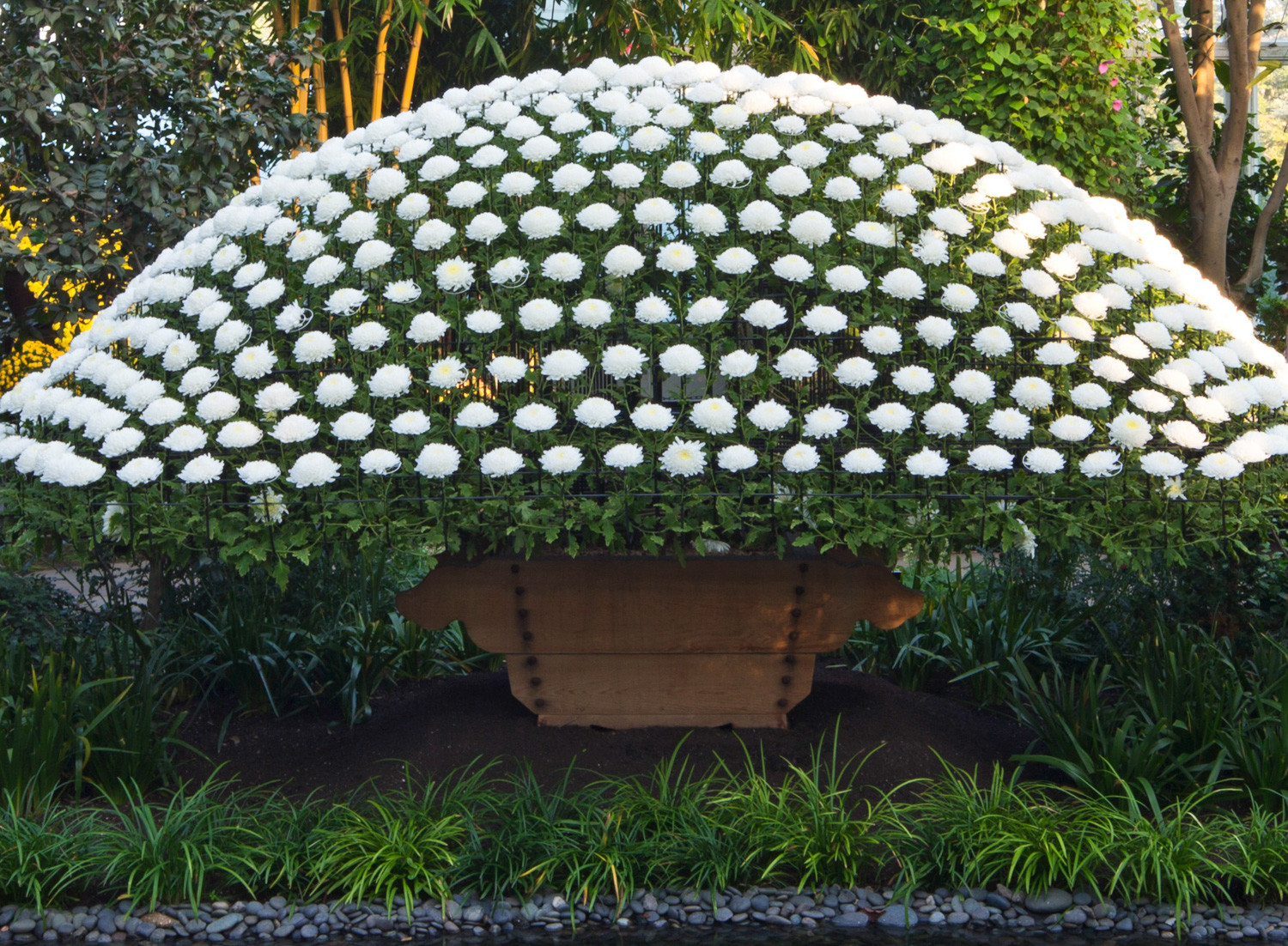The grand life of the thousand-bloom chrysanthemum
Last week, I talked about the Chrysanthemum Show coming to the New York Botanical Garden starting Nov. 4. And this week, I want to start off talking about Yasuhira Iwashita.
Iwashita is a kiku master at Shinjuku Gyoen in Tokyo who supervised the 2007 show. After several years, Kurashina returned to her beloved alpine plants while Kodai Nakazawa, who also trained in Japan, took over the program.
Nakazawa himself finally returned to Japan where he is now chief kiku master at Shinjuku Gyoen after training James Harkins, foreman of gardeners at the Nolen Greenhouses for Living Collections.
This year’s show is brought to you by Harkins, Yukei Kurashina, Miyung Pagliaro and volunteer Barry Goodman.
There are several basic kiku styles. Ozukuri, meaning “thousand blooms,” is literally that. Unbelievable as it may seem, the thousand blooms are all from one plant specially handled over a period of a year.
A cutting taken from the mature stem of a chrysanthemum is potted. As it begins to grow, the tip is pinched off to encourage side branching. Unwanted branches are continually removed until only five strong ones remain — three in the front of the plant, and two behind.
The plant is repotted into the traditional wooden container called a sekidai. The secondary branches from those five original branches are tied to a vertical frame to ensure straight upward growth. When the plant reaches six feet, the side branches are untied from the original frame and retied onto a new frame that determines the final shape. As buds form, all but one is removed.
Despite the extravagant name, the number of blooms grown for this year’s ozukuri is only about 270. Approximately 210 blooms will be wired in formation with the balance hidden below the displayed blossoms to act as understudies in case of damage. If that should happen, the damaged flower is removed and a hidden bloom will be wired in as a replacement.
The next three styles will be variations on the theme.
First, there is kengai, which is a cascading form. Using the smaller chrysanthemum varieties, hundreds of blooms are trained onto a frame that reaches more than six feet, which is tilted downward to resemble a waterfall.
Once again, a stem cutting is made from a mature plant and potted. Each plant is trained to grow upward along a single wire. By pinching the tips of the newly grown branches, numerous secondary branches are produced.
Eventually, the plant is repotted into a larger container and tied to an ovaloid frame. As it continues to grow, the branches are woven through the frame and tied down. As exhibition time approaches, the frame is tilted into its draping position.
Kodai Nakazawa developed several new display forms, including the bridge seen in past years, by modifying the kengai style.
The ogiku style has enormous single flowers, each on the tip of three stems developed on a single plant.
The Chinese view the universe as composed of three important elements: earth (chi), heaven (tian), and the human (jin). They are seen to be of equal importance, and the three flowers on one plant represent these elements. Since each element is believed to be of equal importance, all flowers should be the same height.
Again, a stem cutting is taken and potted. Staking and pinching are done until the plant has three strong branches. The strongest of the three will become the main stem, flanked by the remaining two adjacent branches. Unwanted side branches are removed in addition to all flower buds, with the single exception of the top-most bud. That bud will grow into the huge exhibition flower.
Finally, there is the shino-tsukuri or driving rain style. This time the process begins with two cuttings in a single pot. By successive pinching, two strong branches are eventually grown from each cutting. These branches are then crossed over each other. Twenty-seven secondary branches are finally staked to grow straight upward. The final arrangement consists of 27 blooms, staggered in height to form an angled circle.
It is also worth remarking that all of these flowers must bloom simultaneously and just in time for the chosen show dates. This is accomplished by using a black mesh to cover the plants from 3 p.m. to 8 a.m. This is because chrysanthemums only set buds when daylight diminishes to below 11 to 12 hours. Blooming will occur six to eight weeks after bud development.
Surprisingly, chrysanthemums no longer command as much interest and attention as they used to in Japan where it is now seen more as “an old man’s hobby.” However, there is still profound cross-fertilization between Japan and the United States to bring this fascinating and fleeting art form to new heights.
Have a thought or comment for Sura Jeselsohn? Email her at greenscenesura@gmail.com.






